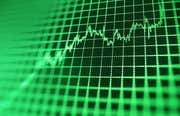The Consumer Price Index (CPI) is the benchmark inflation guide for the U.S. economy. It uses a "basket of goods" approach that aims to compare a consistent base of products from year to year, focusing on products that are bought and used by consumers on a daily basis. The price of your milk, eggs, toothpaste and a hair cut are all captured in the CPI.
The CPI is compiled by the Bureau of Labor Statistics each month around the middle of the month. The BLS site describes the CPI as follow, “The Consumer Price Indexes (CPI) program produces monthly data on changes in the prices paid by urban consumers for a representative basket of goods and services.”
How it works
The CPI measures the retail price changes of about 80,000 goods and services purchased by consumers, called a market basket. The market basket covers over 180 categories falling into eight major groupings:
- Food and beverage
- Housing
- Apparel
- Transportation
- Medical care
- Recreation
- Education and communication
- Other
The market basket is updated every few years by the BLS to remove goods and services that might have become obsolete or irrelevant.
There is a base period for the CPI: the current base period is the 36 month period encompassing the years 1982-1984. This base period is equal to “100” on the index. Subsequent measurements are expressed as some multiple of this base period, for example a 20% increase would be expressed as “120.”
Why the CPI is important?
Many experts consider CPI as the best gauge of inflation available to investors and others. Inflation has an impact on interest rates and many business and investing decisions. An accurate measure of inflation is key to decision makers in formulating their plans.
The CPI is probably the single most important economic indicator available, if for no other reason than because it's very final. Many other indicators derive most of their value from the predictive ability of the CPI, so when this release arrives, many questions will be answered in the markets. This report will often move both equity and fixed-income markets, both the day of the release and on an ongoing basis. It may even set a new course in the markets for upcoming months. Analysts will be more sure of their convictions about what the Fed will do at the next Federal Open Market Committee meeting after digesting the Consumer Price Index.
Strengths:
- Gives the most insight into future Fed rate moves
- Highly watched and analyzed in the media
- Good regional and industry breakdowns for investor research
Weaknesses:
- Month to month volatility
- Fixed CPI has certain biases (new product, substitution), which can distort results
Economic Indicators: Durable Goods Report
-
 Insights
InsightsWhy The Consumer Price Index Is Controversial
Economists are torn about how to calculate inflation. The Consumer Price Index is a popular, but controversial, measure of inflation in the U.S. -
 Insights
Insights'Inflation' Is Not Just One Thing
Medical inflation, education inflation, housing inflation, apparel inflation: the headline number hides a lot. -
 Insights
InsightsInflation and Economic Recovery
Inflation impacts the costs of every facet of the economy. Discover how it can help or hinder the economic recovery. -
 Financial Advisor
Financial AdvisorWhy Inflation Feels Higher Than the Fed's Target Rate
Follow the monthly readings on core PCE inflation in the Personal Income and Outlays reports to understand the Federal Reserve's inflation assessments. -
 Trading
TradingHow CPI Affects the Dollar Against Other Currencies
Here's a look at the Consumer Price Index is a broad measure of inflation, and how it has a dramatic impact on a currency's value against rival currencies. -
 IPF - Banking
IPF - BankingHow Inflation Affects Your Cash Savings
Prices tend to rise over time and this inflation can cut into the value of your savings. Here are some ways you can manage the situation. -
 Insights
InsightsWhat You Should Know About Inflation
Find out how this figure relates to your investment portfolio. -
 Trading
Trading5 Reports That Affect The British Pound
The pound is one of the world's most popular traded currencies, and is heavily impacted by these factors. -
 Investing
InvestingBest ETFs for Inflationary Worries
Inflation may have been muted over the last few years, but that doesn’t mean investors should forget about it.



